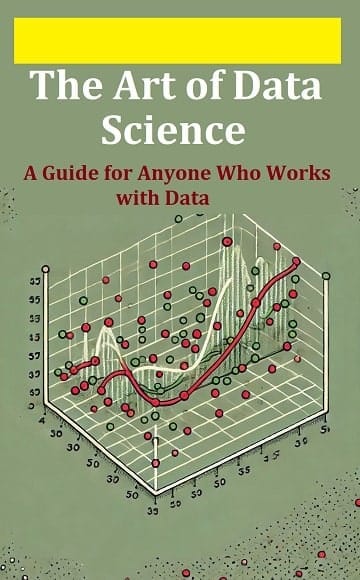Data science is more than just crunching numbers; it’s about uncovering patterns, interpreting results, and making informed decisions. As a dynamic field, it involves various techniques to explore, model, and infer insights from data. This article explores the art of data science through four key topics: Exploratory Data Analysis, Using Models to Explore Your Data, Inference: A Primer, and Interpreting Results.
What is Data Science?
Table of Contents
ToggleData science is an interdisciplinary approach that uses statistical methods, algorithms, and technology to analyze vast amounts of data. The goal is to uncover actionable insights and support decision-making processes. Its applications span industries, from healthcare and finance to retail and technology.
Data science involves multiple stages, including data collection, preprocessing, exploratory data analysis (EDA), modeling, inference, and result interpretation. These steps form a pipeline that ensures data is transformed into valuable knowledge.
Exploratory Data Analysis: The First Step in Data Science
Exploratory Data Analysis (EDA) serves as the foundation of any data science project. It focuses on summarizing and visualizing datasets to uncover patterns, relationships, and trends. This process is essential for understanding the dataset’s structure and guiding subsequent modeling efforts. By systematically exploring the data, EDA helps in identifying hidden insights that might otherwise be overlooked.
Key Goals of EDA
- Understanding Data Distributions: Visual tools like histograms, box plots, and density plots reveal data distribution, helping analysts detect skewness, normality, or multimodal behavior.
- Identifying Outliers: Detecting anomalies ensures these values do not distort statistical models or lead to inaccurate predictions.
- Detecting Relationships: Pairwise visualizations, such as scatter plots or heatmaps, uncover linear or nonlinear correlations between variables.
- Assessing Data Quality: Missing values, duplicate records, and inconsistencies are flagged, ensuring the dataset is clean and ready for modeling.

Download PDF: The Art of Data Science – A Guide for Anyone Who Works with Data.
Tools and Techniques for EDA
- Visualization Tools: Libraries like Matplotlib, Seaborn, and Tableau create intuitive graphics that simplify complex data.
- Statistical Summaries: Metrics like mean, median, variance, and quartiles summarize key data characteristics.
- Dimensionality Reduction: Advanced techniques like PCA (Principal Component Analysis) simplify datasets while preserving essential patterns, making further analysis manageable.
Using Models to Explore Your Data
While Exploratory Data Analysis (EDA) serves as the foundation for understanding data, using models takes exploration a step further by uncovering complex relationships, predicting outcomes, and validating hypotheses. Models act as powerful tools to extract deeper insights that might not be immediately evident through traditional EDA techniques.
Types of Models in Data Science
- Supervised Learning Models: These include regression (e.g., linear regression) for predicting continuous values and classification algorithms (e.g., decision trees, random forests) for categorizing data.
- Unsupervised Learning Models: Algorithms like K-means clustering and Apriori association mining identify natural groupings and patterns in unlabeled data.
- Time Series Models: Tools like ARIMA and Prophet analyze and forecast temporal trends, enabling accurate predictions for time-dependent data.
Exploring Data Through Models
Models provide answers to business-critical questions. For example, “What factors influence customer churn?” or “How can we forecast quarterly sales trends?” By analyzing historical data and training these models, businesses gain actionable, evidence-based insights, driving smarter decision-making.
Inference: A Primer
Inference is the process of drawing conclusions about a population based on a sample of data. It bridges the gap between data exploration and actionable insights, ensuring that findings are statistically valid and meaningful.
Importance of Statistical Inference
Statistical inference generalizes insights from a dataset to the entire population, reducing the need for exhaustive data collection. For example, if a survey reveals that 60% of a sampled group prefers a product, inference can estimate the overall preference rate, accounting for variability through confidence intervals. This enables businesses and researchers to make informed predictions while understanding the reliability of their conclusions.
Tools for Inference
- R Programming: Offers extensive statistical packages for robust analyses.
- Python: Simplifies inferential tasks using libraries like SciPy and Statsmodels.
- SPSS: An intuitive tool for hypothesis testing, regression, and data visualization.
Interpreting Results
The ultimate goal of data science is to generate actionable insights. However, even the most accurate model or robust analysis is meaningless if the results are not interpreted correctly. Misinterpretation can lead to flawed decisions, lost opportunities, or even significant risks in industries like healthcare or finance.
Best Practices for Result Interpretation
- Understand the Context
Data analysis is not done in isolation; understanding the specific domain and problem is critical. For instance, a minor improvement in accuracy may hold immense importance in a medical diagnosis system, while the same might be insignificant in predicting movie preferences. - Visualize Findings
Effective visualizations simplify complex data, making insights more digestible. Charts, heatmaps, and dashboards tailored to the audience help stakeholders grasp key points effortlessly. - Consider Limitations
Every model has assumptions, biases, and constraints. Transparently addressing these factors ensures responsible use of insights. - Validate Findings
Validation builds trust in results. Techniques like testing on fresh datasets or replicating studies provide reliability to your conclusions.
Storytelling with Data
Interpreting results isn’t just about presenting numbers. It’s about weaving a narrative that contextualizes insights, explains their significance, and outlines actionable recommendations, enabling stakeholders to make informed decisions confidently.
Conclusion
The art of data science lies in seamlessly integrating techniques like Exploratory Data Analysis, Modeling, Inference, and Result Interpretation into a cohesive pipeline. Mastering these elements empowers businesses to make data-driven decisions and gain a competitive edge in their industries. By using the right tools, applying robust methodologies, and focusing on storytelling, data scientists can unlock the true potential of their data.